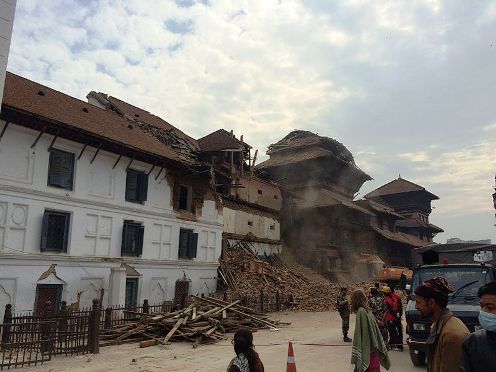April 25 in History
2015 – Nearly 9,100 are killed after a massive 7.8 magnitude earthquake strikes Nepal
The worst natural disaster to strike Nepal since the 1934 Nepal–Bihar earthquake, the magnitude of 7.8Mw or 8.1Ms earthquake with a maximum Mercalli Intensity of VIII (Severe), occurred at 11:56 Nepal Standard Time on this day in 2015, killing nearly 9,000 people and injuring nearly 22,000. With its epicentre east of Gorkha District at Barpak, Gorkha, and its hypocentre at a depth of approximately 8.2 km, the earthquake triggered an avalanche on Mount Everest, killing 22, making this the deadliest day on the mountain in history.
The earthquake also triggered another huge avalanche in the Langtang valley, where 250 people were reported missing. Hundreds of thousands of Nepalese were made homeless with entire villages flattened across many districts of the country. Centuries-old buildings were destroyed at UNESCO World Heritage Sites in the Kathmandu Valley, including some at the Kathmandu Durbar Square, the Patan Durbar Square, the Bhaktapur Durbar Square, the Changu Narayan Temple, the Boudhanath stupa and the Swayambhunath stupa. Geophysicists and other experts had warned for decades that Nepal was vulnerable to a deadly earthquake, particularly because of its geology, urbanization, and architecture. Dharahara, also called Bhimsen Tower, which was a nine-storey and 61.88-metre-tall tower was destroyed. It was a part of the architecture of Kathmandu recognized by UNESCO.
Continued aftershocks occurred throughout Nepal at the intervals of 15–20 minutes, with one shock reaching a magnitude of 6.7 on at 12:54:08 NST on April 26. The country also had a continued risk of landslides.
-Wikipedia
Photo Caption – Basantpur Durbar Square after the earthquake – Wikipedia


